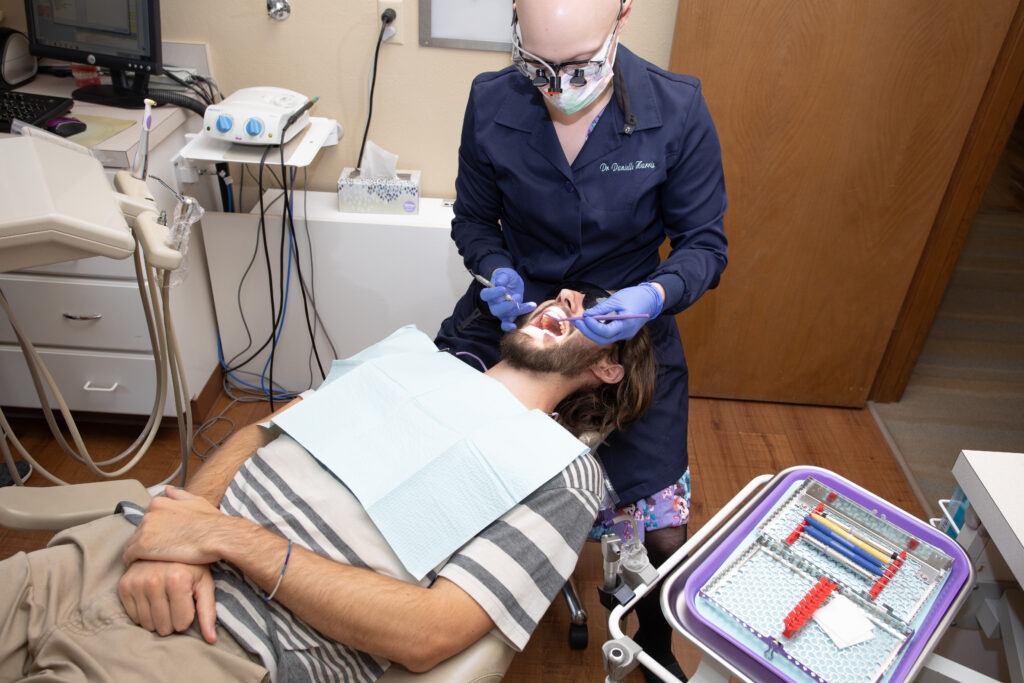Here at Cashmere Family Dentistry, our top priorities include ensuring your comfort during treatment and giving you the best care possible. Veneers are a popular option for fixing both cosmetic and practical oral issues. Our team is committed to helping our patients receive the smile they deserve to enjoy. Here, you will learn exactly what a veneer is, why you may benefit from one, as well as the different types of veneers!
What are veneers, and why might you need one?
A custom-made appliance, veneers are a natural-looking shell-like layer made of various materials placed over a tooth to both improve the look of your smile and protect it from damage. Orthodontists use a very thin film of the material in order to allow you a comfortable fit and minimize required tooth reduction.
Typically known for cosmetic use, they can also provide practical solutions to your oral issues. They are a great option to conceal chips and cracks while just about seamlessly blending in with the rest of your teeth. Also, being able to fix gaps in your teeth and minor misalignment, veneers create the illusion of straighter, filled-out teeth.
Benefits of receiving a veneer
Being able to improve your oral health and enhance tooth function, veneers are a great option to give your teeth a second life without needing to go through more invasive procedures such as tooth replacement.
They also have the ability to improve the aesthetics of your smile and, in turn, your confidence in openly smiling around others. If you have small visible chips, you may be hesitant to smile and fully express your happiness to the rest of the world. However, veneers are able to turn that around for you and boost your confidence at the same time.
Different Types Of Veneers
Traditional porcelain veneers
One of the most popular materials to receive a veneer in, this traditional choice is a patient favorite for many reasons. Made of high-quality porcelain, they are strong against fractures and resistant to stains and discoloration. In most cases, they last around 15 years (or even longer when well-maintained). Very little to no part of your teeth will need to be shaved down to fit the extremely thin layer.
Composite veneers
Known as an affordable alternative to their porcelain counterparts, composite veneers are made of resin and can be placed on your teeth with a short procedure. These are temporary solutions to oral issues, lasting around 5 years before replacement is necessary, and are most effective when placed on your front teeth. Minimal tooth preparation is required, and are available in natural tooth colors so that they blend right in.
Ceramic veneers
A cost-effective and minimally invasive choice, ceramic-made veneers are a reliable option for those looking for an even more natural look than porcelain. Known for their strength and durability, they are custom-crafted by lab technicians to make sure they provide as comfortable of a fit as possible.
Lumineers (non-prep veneers)
Another minimal tooth-preparation option, lumineers (also referred to as non-prep veneers), are another temporary option that is easily attached to your tooth, avoiding any invasive work. Though not as strong as porcelain or ceramic, this option is worth considering if you are looking for a reversible procedure. Should the case arrive where you need it removed, it can be done for you without any damage done to your permanent teeth.

Maintaining Your Veneers
Steer away from very hard or sticky foods
While resilient, eating hard or sticky food may place the appliance under unnecessary pressure and potentially be able to erode or damage the veneers over a long period of time. Just like with a regular tooth, keeping it clean of leftover food can help to keep it safe and last even longer. Being mindful of your food choices can help you preserve the functionality and aesthetic of your veneer and smile alike.
Avoid using your teeth as tools
As strong as the various veneer materials are, if you can avoid excessive force placed on your teeth, the better. This can gradually wear down your veneer, leading to chipping and other types of avoidable damage. We recommend you avoid activities such as biting your nails, ripping open bags, and holding things in your mouth. Instead, you can simply use a physical tool to do the job.
Attend your regular dental checkups
When you consistently attend your biannual oral cleaning and care checkups, we are able to monitor the condition of your veneer and let you know of any changes that may have occurred since you got it placed. This way, we are able to promptly address issues should they come up as opposed to waiting an extended time period, letting them fester. We believe the earlier we are able to make a diagnosis, the less complex treatment to solve it will be!

It Is Never Too Late To Invest In Your Smile!
We are proud to offer veneers as an option to give our patients’ teeth a new life, helping them function for many years to come. Drs. Ryan and Janie Busk, alongside our expert team, are always eager to introduce new patients to our practice and enhance their beautiful smiles. To learn more about different types of veneers and how they can benefit your oral health, feel free to give our Cashmere office a call at 509-782-2516. Our team will be happy to help you out with all of your needs!




